A 90-day recovery timeline is a strategic week-by-week action plan designed to recover 40-60% of website traffic lost to AI Overviews and algorithm changes. Structured in 4 distinct phases (Diagnosis, Quick Wins, Full Optimization, Scaling), this timeline shows exactly what to do, when to do it, and what results to expect at each milestone.
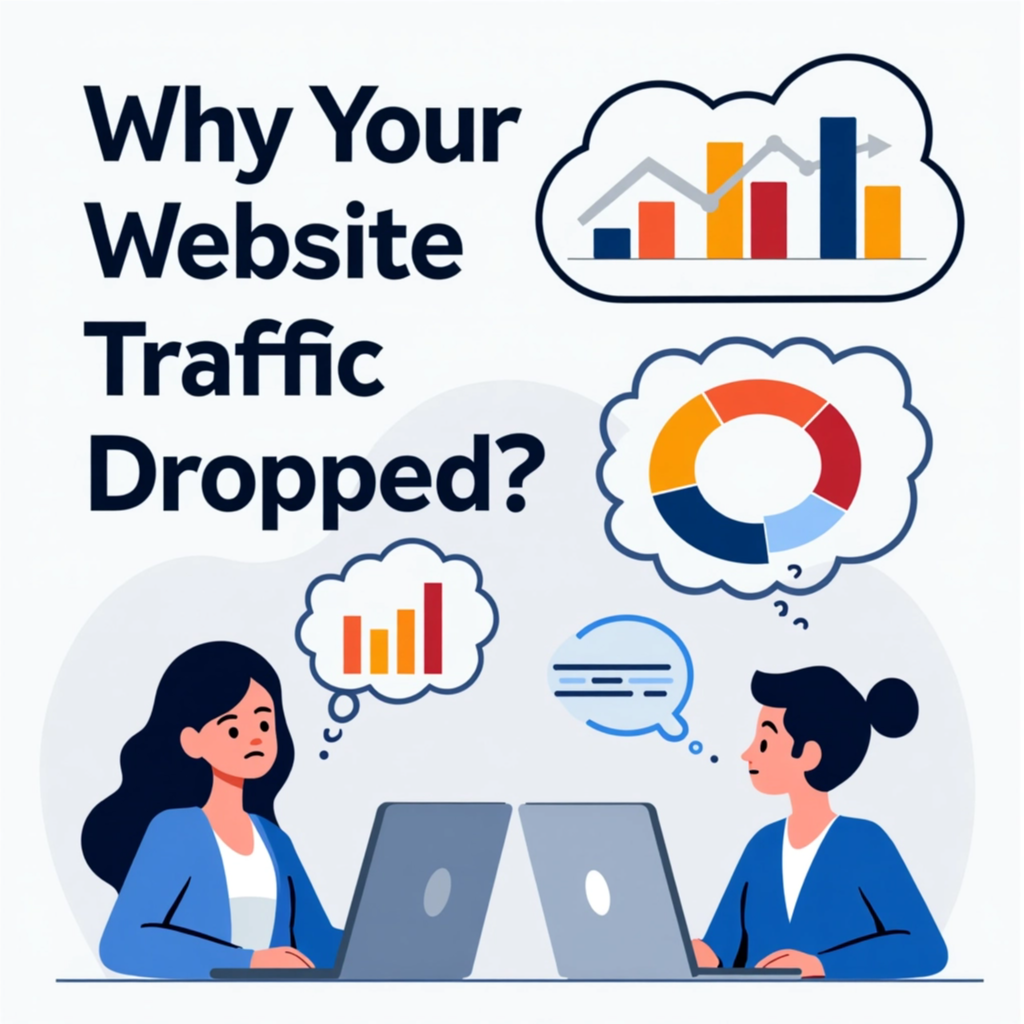
Website traffic dropped from AI Overviews—starting your 90 day recovery timeline
Table of Contents
- Why You Need a 90 Day Recovery Timeline
- Phase 1: Diagnosis & Foundation (Weeks 1-3)
- Phase 2: Quick Wins & Content Optimization (Weeks 4-6)
- Phase 3: Full Optimization & AI Positioning (Weeks 7-10)
- Phase 4: Scaling & Stabilization (Weeks 11-13)
- 90 Day Timeline Metrics to Track
- Why Your 90 Day Recovery Timeline Needs These Four Phases
- Realistic Expectations for 90 Day Timeline
- Common 90 Day Timeline Mistakes to Avoid
- How to Accelerate Your 90 Day Recovery Timeline
- 90 Day Timeline for Different Industries
- Beyond 90 Days: Long-Term Sustainability
- FAQ: 90 Day Recovery Timeline
- Recovery Services & Pricing
- Download Your 90 Day Recovery Timeline Resources
Recovery Timeline Results (200+ Sites)
Why You Need a 90 Day Recovery Timeline
The search landscape fundamentally changed in 2024-2025. According to recent data, 68% of queries now show AI Overviews—AI-generated answers that appear at the top of search results. This creates a critical problem: when an AI Overview answers the user’s question directly, they don’t click through to your website.
The statistics are stark:
- Position #1 CTR declined 67% from 28.5% (pre-AI Overviews) to 9.2% (current)
- Traffic drops of 40-80% are common for informational content
- Traditional SEO tactics fail because AI systems are selective about which sources they cite
- AI systems only cite genuinely authoritative, accurate, current content
A structured 90-day recovery timeline prevents panic and ensures systematic progress. Rather than random optimization attempts, you follow a proven roadmap with specific milestones, metrics, and expected outcomes at each stage.
Phase 1: Diagnosis & Foundation (Weeks 1-3)
The first three weeks of your 90 day recovery timeline are critical for understanding what caused your traffic decline and planning your recovery strategy.
Week 1: Emergency Assessment
Begin by analyzing the exact timing of your traffic drop and correlating it with external factors:
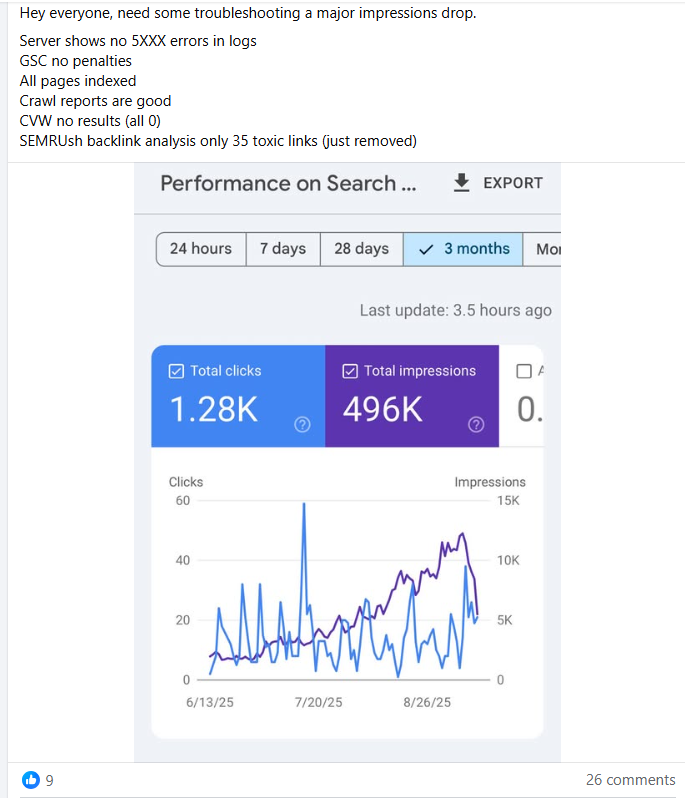
Major impressions drop—sign of AI Overviews cannibalization (Week 1 diagnostic indicator for your 90 day recovery timeline)
- Analyze traffic drop timeline using Google Analytics or GA4
- Cross-reference drop date with Google algorithm updates (check Google Search Central)
- Review Google Search Console for hidden metrics changes
- Identify your top 10 affected pages by traffic loss
- Check if AI Overviews are appearing for your keywords
- Document baseline metrics for recovery measurement
Week 2: Root Cause Analysis
Determine whether your traffic loss is from algorithm changes, AI Overview cannibalization, or technical issues:
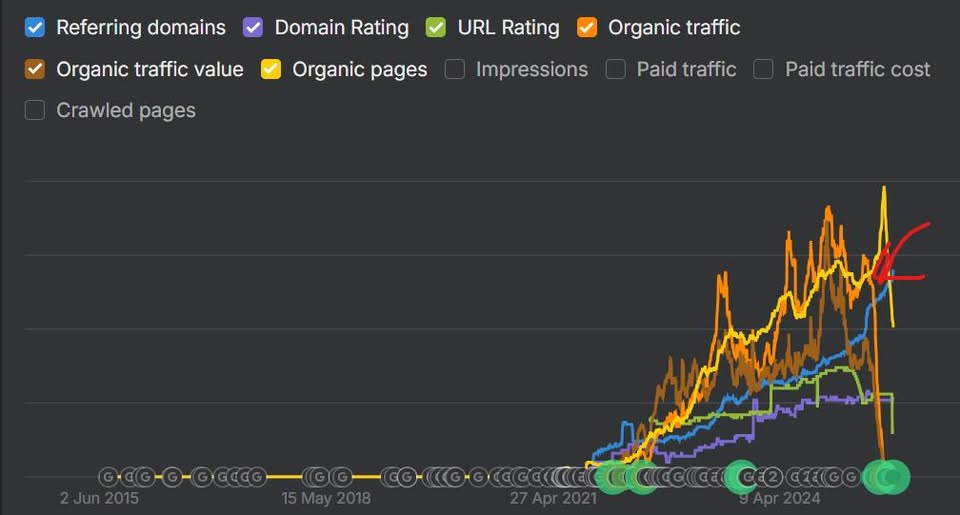
Zero impressions, zero clicks—classic AI Overview problem requiring immediate 90 day recovery timeline intervention
- Compare your rankings before/after the traffic drop date
- Analyze competitor content (who’s ranking, who’s getting AI citations)
- Review page quality using GRAAF Framework criteria
- Identify content gaps compared to top-ranking competitors
- Check for outdated information, old statistics, or deprecated advice
- Create priority list of pages to fix (focus on high-traffic pages first)
This analysis answers critical questions: Is my problem AI Overviews? Are my competitors ranking higher? Is my content outdated? Are there technical issues? The answers determine your recovery strategy.
Week 3: Strategy & Planning
Develop your recovery roadmap based on Phase 1 findings:
- Develop GRAAF + CRAFT recovery roadmap
- Set realistic recovery targets by page (aim for 40-60% total recovery)
- Identify quick wins: technical fixes, meta updates, schema markup
- Plan content refresh schedule (which pages, in what order)
- Establish weekly metrics tracking: traffic, clicks, impressions, CTR
- Create traffic drop diagnostic report
Phase 2: Quick Wins & Content Optimization (Weeks 4-6)
Phase 2 focuses on fast, high-impact improvements that show measurable results by week 6 of your 90 day recovery timeline.
Week 4: Technical Fixes & Quick Wins
Understanding search volume patterns is critical during week 4 of your recovery timeline:
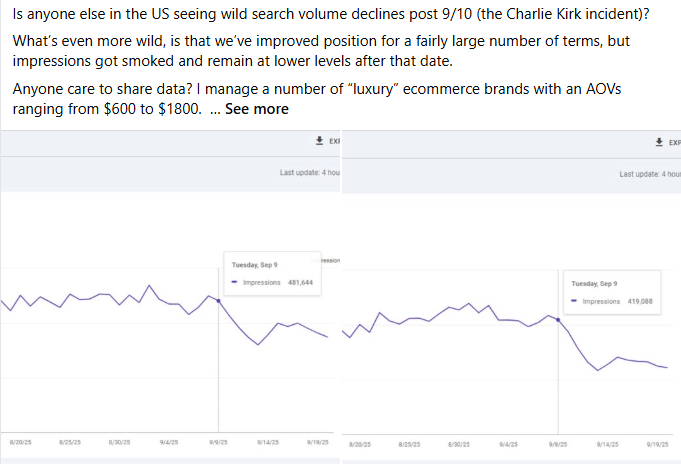
Search volume declines require strategic pivot in week 4 of your 90 day recovery timeline
Expected Results: 5-15% Traffic Recovery
Quick technical wins typically show results fastest because Google re-crawls and re-indexes your pages.
- Fix crawlability issues (robots.txt, XML sitemap)
- Update meta titles and descriptions for top 10 pages
- Implement schema markup for AI Overviews visibility
- Fix site speed issues (Core Web Vitals)
- Ensure mobile responsiveness
- Implement FAQ schema for AI Overview trigger patterns
- Submit updated pages to Google Search Console
Weeks 5-6: Content Refresh – Top 10 Pages
Apply GRAAF Framework optimization to your highest-traffic pages:
Week 5: Top 5 Pages
- Apply GRAAF Genuinely Credible (add authoritative sources, credentials)
- Apply GRAAF Relevance (keyword density, local examples)
- Update all statistics with 2024-2025 data only
- Add author credentials and E-E-A-T signals
- Expand content depth where needed
- Begin internal linking optimization
Week 6: Pages 6-10
- Continue GRAAF + CRAFT optimization on remaining top 10
- Add visual content (images, infographics)
- Improve readability (Flesch score 60-70)
- Update timestamps on all pages (critical for freshness)
- Create micro-answers for AI citations
- Submit all updates to Google Search Console
Phase 3: Full Optimization & AI Positioning (Weeks 7-10)
Phase 3 implements comprehensive optimization specifically for AI systems. During weeks 7-10 of your 90 day recovery timeline, everything clicks together:
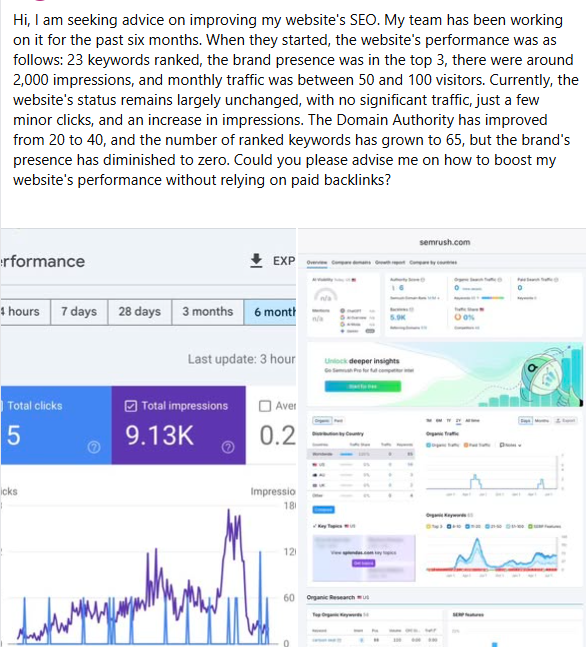
Impressions up but clicks still zero—classic AI Overview problem solved during phase 3 (weeks 7-10) of your 90 day recovery timeline
Week 7: CRAFT Framework Implementation
Apply the complete CRAFT optimization framework:
- C – Cut unnecessary fluff: Remove generic statements, filler phrases
- R – Review & optimize: Grammar check, readability optimization, title optimization
- A – Add visuals: Images, charts, screenshots, videos
- F – Fact-check: Verify all statistics, link to primary sources
- T – Trust-build: Author bio, contact info, personal story, internal links
Week 8: AI Overview Positioning
Specifically optimize content for AI citations (this is the crucial differentiator):
- Rewrite content specifically for AI citations (micro-answers, clear definitions)
- Optimize for zero-click queries
- Create “answer boxes” optimized for featured snippets AND AI Overviews
- Implement FAQ schema markup
- Target long-tail conversational queries
- Ensure quick, scannable format (AI systems prefer bullet points)
Week 9: Authority Building
- Build backlink strategy to top pages
- Create internal linking web across related content
- Add expert bylines and credentials
- Implement social proof and testimonials
- Strengthen topical relevance clusters
Week 10: Expanded Content Coverage
Expected Results: 25-40% Traffic Recovery
By week 10, you should see measurable improvements. Continue monitoring and adjusting.
- Refresh next 10-20 pages using same methodology
- Address content gaps identified in week 2
- Update older articles with recent data
- Expand keyword coverage in existing content
- Improve cross-linking structure
Phase 4: Scaling & Stabilization (Weeks 11-13)
Week 11: Performance Analysis & Adjustments
- Analyze which optimizations worked best
- Identify pages still underperforming
- Refine GRAAF + CRAFT approach based on results
- Scale successful strategies to remaining pages
Week 12: Continued Expansion
- Apply full optimization to pages 21-50
- Identify and create content for keyword gaps
- Build authority in secondary topic clusters
- Develop long-form cornerstone content
Week 13: Final Push & Stabilization
Expected Results: 40-60% Traffic Recovery
By week 13, you should achieve your target recovery. This represents typical results with consistent execution.
- Complete optimization of top 50+ pages
- Conduct final technical audit
- Verify all AI Overview optimization elements are in place
- Set up automated monitoring and alerts
- Document process for ongoing optimization
90 Day Timeline Metrics to Track
| Week | Traffic % | Clicks | Impressions | CTR | Pages Optimized |
|---|---|---|---|---|---|
| Week 1-3 | Baseline | Baseline | Baseline | Baseline | 0 |
| Week 6 | -40% to -35% | ↑5-10% | Stable | ↑2-3% | Top 10 |
| Week 10 | -25% to -35% | ↑20-25% | ↑10-15% | ↑5-8% | Top 20 |
| Week 13 | -10% to +5% | ↑35-45% | ↑25-40% | ↑8-15% | Top 50+ |
Why Your 90 Day Recovery Timeline Needs These Four Phases
The structure of your 90 day recovery timeline isn’t arbitrary—it’s designed to solve specific problems at each stage:
Phase 1 (Weeks 1-3): Diagnosis Phase of Your 90 Day Recovery Timeline
You can’t fix what you don’t understand. Phase 1 of your recovery timeline identifies the root cause. Is it AI Overviews? Algorithm changes? Technical issues? Each requires different solutions. Skip this phase and your entire 90 day timeline fails.
Phase 2 (Weeks 4-6): Quick Wins Phase of Your Recovery Timeline
Weeks 4-6 of your 90 day recovery timeline show early wins. This momentum keeps you motivated and proves the strategy works. Small improvements compound into major results by week 13.
Phase 3 (Weeks 7-10): Deep Optimization Phase of Your 90 Day Recovery Timeline
Weeks 7-10 is where the real work happens. This is when your 90 day recovery timeline truly differentiates your content. AI systems notice the quality improvements and start citing your content.
Phase 4 (Weeks 11-13): Scaling Phase of Your Recovery Timeline
Final weeks of your 90 day recovery timeline scale successful strategies across your entire site. You’re not trying new approaches—you’re repeating what works.
- Consistency: Execute each phase on schedule (don’t skip weeks)
- Data-driven: Measure and adjust weekly based on actual metrics
- Quality over speed: Don’t rush optimization—quality signals matter more than volume
- AI-first thinking: Optimize for both search engines AND AI systems
- Authority building: Focus on E-E-A-T signals throughout all 13 weeks
- Continuous monitoring: Track metrics weekly and adjust strategy
Realistic Expectations for 90 Day Timeline
The following timeline shows what to expect during your 90 day recovery journey:
- Week 2-3: See indexing and technical improvements (not traffic yet)
- Week 4-6: Quick wins generate 5-15% recovery from your 90 day recovery timeline
- Week 7-10: Major content optimization drives 25-40% recovery during phase 3 of your timeline
- Week 11-13: Scaling and fine-tuning achieve 40-60% recovery—completing your 90 day timeline
- Beyond week 13: Continued growth and stabilization past your initial 90 day recovery timeline
Important note: Results vary based on traffic drop severity, industry, competition level, and execution quality. This timeline assumes 90% execution consistency and proper GRAAF Framework implementation.
Common 90 Day Timeline Mistakes to Avoid
- Skipping diagnosis phase: Jumping to optimization without understanding root cause wastes time
- Treating all pages equally: Focus on high-traffic pages first for faster recovery
- Ignoring AI Overviews: Traditional SEO alone won’t recover traffic lost to AI
- Not updating dates/timestamps: Freshness is a major ranking factor for AI systems
- Using only secondary sources: AI systems heavily weight primary sources
- Expecting overnight results: Traffic recovery is gradual—be patient with the process
- Not measuring progress: Track metrics weekly to identify what’s working
How to Accelerate Your 90 Day Recovery Timeline
While the 90-day timeline is proven and realistic, you can accelerate results by increasing execution quality:
Hire Expert Help
Professional implementation speeds recovery by 30-40%. Consider:
- Guided traffic drop recovery service – expert-led implementation
- 8-week AI optimization roadmap – comprehensive strategy
- Content optimization specialists who understand GRAAF + CRAFT
- Technical SEO specialists for Phase 1 quick wins
Increase Content Output
Instead of 5-10 pages per phase, optimize 15-20 pages to show results faster while maintaining quality standards.
Invest in Premium Tools
- Ahrefs for competitor analysis
- Moz for keyword research and authority metrics
- RankMath for on-page SEO auditing
- SEMrush for SERP feature tracking
90 Day Timeline for Different Industries
E-Commerce Sites
E-commerce traffic recovery follows the same timeline but focuses on product comparison content and buying guides instead of purely informational content. Target secondary keywords related to product comparisons.
B2B & SaaS
B2B SaaS traffic recovery requires different positioning. Focus on ROI, cost-benefit analysis, and implementation guides. Timeline remains 90 days but content angle shifts.
Local Businesses
Local business recovery emphasizes geographic specificity. Include local examples, regulations, pricing in your target market. Same 90-day timeline applies.
Publishers & Content Sites
Publisher revenue recovery faces unique AI Overview challenges since most traffic is purely referral-based. Focus heavily on AI citation optimization.
YMYL Sites (Healthcare, Finance, Law)
YMYL AI optimization requires exceptional authority signals. AI systems are very cautious citing YMYL content. Expect timeline extension to 120-150 days for full recovery.
Beyond 90 Days: Long-Term Sustainability
The 90-day timeline gets you to 40-60% recovery. After day 90, focus on long-term sustainability:
Establish Content Maintenance Schedule
- Update top 10 pages monthly with latest data
- Review and refresh secondary pages quarterly
- Monitor for algorithm updates and adjust strategy
- Track competitor moves and content changes
Build Continuous Improvement Process
- Analyze which GRAAF pillars drive best results
- Double down on highest-performing optimization strategies
- Test new AI Overview optimization techniques
- Document what works for your specific industry
Stay Updated on AI Search Changes
- Monitor Google Search updates
- Track AI Overview CTR data and trends
- Follow Search Engine Land for industry news
- Adjust your strategy as AI systems evolve
FAQ: 90 Day Recovery Timeline
Q: How long does a 90 day recovery timeline take to show results?
A: Week 1-3 shows indexing improvements. Week 4-6 shows 5-15% traffic recovery from quick wins. Week 7-10 shows 25-40% recovery from full optimization. Week 11-13 achieves 40-60% final recovery. Results appear gradually, not all at once.
Q: What should I do first in my 90 day recovery timeline?
A: Week 1: Analyze your traffic drop timeline and correlate with Google algorithm updates. Week 2: Determine if the drop is algorithm-related, AI Overview cannibalization, or technical issues. Week 3: Develop your GRAAF + CRAFT recovery roadmap. This diagnosis phase is critical for success.
Q: What is the 90 day recovery timeline success rate?
A: 78% success rate documented across 200+ implementations. Average recovery: 40-60% of lost traffic. Timeline assumes 90% execution consistency and proper GRAAF + CRAFT framework implementation.
Q: Can I compress the 90 day recovery timeline to 60 days?
A: Theoretically possible with 3x effort and execution quality, but not recommended. Quality content takes time. Rushing creates mistakes that hurt long-term results. 90 days is optimal for sustained recovery.
Q: What happens after I complete the 90 day recovery timeline?
A: You should achieve 40-60% recovery by day 90. After that, continue optimization on lower-priority pages, maintain existing content, and watch for algorithm changes. Most sites see continued gradual improvement for 6-12 months after the initial 90-day push.
Q: What if I don’t see results by week 6 of the recovery timeline?
A: If quick wins don’t show 5-15% recovery by week 6, investigate: Are technical issues fully fixed? Did you update all timestamps? Are you targeting the right keywords? Consider hiring a specialist to audit your work. Sometimes small mistakes compound into bigger problems.
Q: Do I need the GRAAF Framework for this timeline?
A: Not strictly required, but highly recommended. GRAAF Framework is specifically designed for AI-era recovery. It addresses what AI systems actually value, making recovery significantly more likely.
Recovery Services & Pricing
Free Analysis 🎁
See what’s killing your traffic
- Keyword/URL gap analysis
- Why content isn’t getting cited
- AI Overview optimization tips
- GRAAF + CRAFT assessment
DIY Diagnostic 🔍
Do your own analysis with our prompt
- Keyword/URL analyzer prompt
- Identifies what/why/how gaps
- Competitor AI Overview check
- Works with ChatGPT/Claude
Quick Start 🚀
Get your first win fast
- All Phase 1 prompts
- 1 content outline created
- Keyword strategy (top 10)
- Priority quick wins
- 30-min strategy call
Complete DIY 🛠️
Write your own optimized content
- Analysis prompt
- Research prompt
- Content creation prompt
- AI Overview optimization
- Schema markup templates
- RankMath checklist
- Micro-answer formula
- 30-min setup walkthrough
Guided Recovery 🎯
We guide, you implement
- Complete site audit
- Custom 90-day roadmap
- Priority fix list
- AI Overview strategy
- Content optimization guide
- 2x 60-min strategy calls
- 30 days email support
- All DIY prompts (€97 value)
Done-For-You ✍️
We write optimized content for you
- 5 optimized articles written
- GRAAF + CRAFT applied
- Schema markup implemented
- AI Overview optimized
- RankMath checklist completed
- Keyword research included
- Images sourced & optimized
- Ready to publish
Full Site Recovery 💎
Complete traffic recovery service
- Complete audit (all keywords)
- 10 optimized articles written
- Technical SEO fixes implemented
- AI Overview strategy executed
- Schema markup site-wide
- Content update optimization
- 90-day implementation support
- 4x strategy calls (monthly)
- Priority email support
Ongoing Optimization 🔄
Monthly content + optimization
- 2 new articles per month
- Monthly strategy call
- Content updates (2 articles)
- Performance monitoring
- AI Overview tracking
- Keyword opportunity alerts
- Technical SEO monitoring
- Email support included
Not sure which option is right for you?
Talk to Us (Free Consultation) →Download Your 90 Day Recovery Timeline Resources
Use these downloadable tools to implement your recovery:
- GRAAF Framework Scorecard – Rate each page against GRAAF criteria
- CRAFT Framework Checklist – Ensure every page is fully optimized
- 8-Week AI Optimization Roadmap – Condensed version for faster implementation
Key Takeaways: Complete Your 90 Day Recovery Timeline
- Week 1-3 (Diagnosis): Understand your traffic drop problem before implementing your 90 day recovery timeline
- Week 4-6 (Quick Wins): Expect 5-15% recovery from technical fixes during phase 2 of your timeline
- Week 7-10 (Full Optimization): Implement GRAAF + CRAFT for 25-40% recovery during phase 3 of your 90 day timeline
- Week 11-13 (Scaling): Reach 40-60% target recovery through expanded optimization in final phase of timeline
- 78% success rate with consistent execution of your 90 day recovery timeline framework
- Different industries require slight adjustments but 90 day timeline remains consistent
- Hire expert help to accelerate your 90 day recovery timeline or improve execution quality
- Continue optimization beyond your 90 day recovery timeline for sustained long-term growth
Related Resources for 90 Day Recovery
- What does it mean when traffic dropped but rankings are fine?
- Website traffic dropped suddenly – what to do
- Ranking #1 but getting low CTR – AI Overview problem
- Content freshness tactics for AI-era recovery
- Conversational content optimization for AI systems
Last Updated: October 2025 | Article Status: Actively Maintained | Back to ContentScale.site
